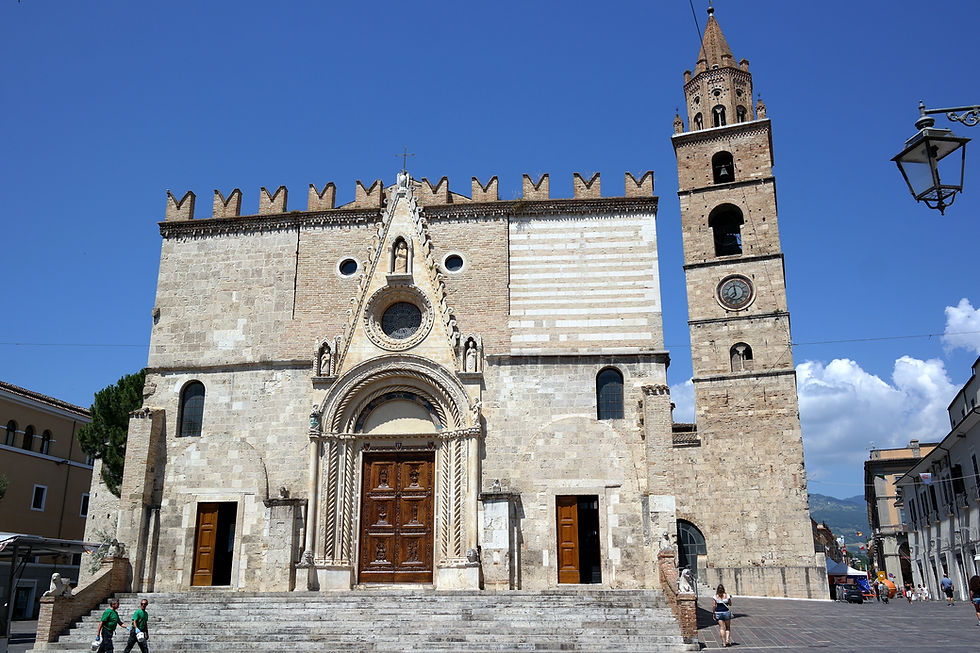Experience the magic of pruning in Abruzzo: a journey between wine, nature and tradition
- valeorsini31
- Mar 30
- 4 min read

Abruzzo, a generous land of vineyards that extend between rolling hills and mountain slopes, has kept the secret of viticulture for centuries. Among the fundamental practices to guarantee high quality wines, pruning is an art handed down from generation to generation, a gesture that combines science, experience and deep knowledge of nature.
The crucial role of pruning
The pruning of the vine is much more than a simple agricultural operation: it is an annual rite that directly affects the production of the grapes, its quality and the longevity of the plant. In Abruzzo, pruning is carried out in the winter months, between January and March, when the vine is in vegetative rest. This period is ideal to ensure the right balance between vegetative growth and fruit production, avoiding an excessive proliferation of branches that could compromise the quality of the crop.
Pruning techniques: between tradition and innovation
The pruning techniques used in Abruzzo vary depending on the vine's breeding system. Among the most common methods we find:
Guyot: a system that involves the maintenance of a main stem and the removal of the others, favoring the controlled growth of the vine.
Spurred cord: characterized by a main stem with short spurs, suitable for grape varieties of great resistance such as Montepulciano d'Abruzzo.
Abruzzese pergola: a traditional method that allows horizontal growth of the trails, ideal for protecting the bunches from the sun and promoting uniform maturation.
Today, thanks to innovation and research, Abruzzo winegrowers combine ancient wisdom with new technologies, using precision tools and monitoring to optimize pruning and reduce plant stress.
The importance of the expert hand
Pruning is an art that requires expert hands and a keen eye. Each cut must be made with precision to avoid unnecessary injuries to the plant and ensure proper healing. The winegrower must know the behavior of the vine, predict future growth and balance productivity with the health of the plant. The choice of the branch to be eliminated or to be preserved can make the difference between an abundant and a scarce harvest.
Pruning as a tourist experience
In recent years, many Abruzzo wineries have begun to transform pruning into an event to be experienced even for tourists. During the winter, the wineries organize days dedicated to the discovery of this centuries-old practice, offering visitors the opportunity to actively participate in pruning under the guidance of expert winegrowers.
These experiences not only allow you to better understand the work in the vineyards, but are often accompanied by wine tastings and typical products, making everything a unique opportunity to immerse yourself in the Abruzzo food and wine culture.
Participating in a pruning day means living an authentic moment of the local agricultural tradition, an unforgettable experience for wine and nature lovers.
The physical and psychological benefits of pruning for tourists
Actively participating in the pruning of the vine is not only an opportunity to learn an ancient art, but brings with it numerous physical and psychological benefits. Working outdoors, immersed in the green of the Abruzzo hills, promotes general well-being, reducing stress and improving mood thanks to contact with nature.
From a physical point of view, manual pruning activity helps keep muscles and joints active, offering an experience similar to light physical activity. Walking between the rows, bending down to closely observe the branches and using your hands to cut dry branches stimulates coordination and a sense of balance.
On a psychological level, pruning promotes concentration and relaxation. The repetitive gesture of cutting, combined with the attention necessary to choose the right branches, induces a sort of active meditation that allows you to get away from daily worries. In addition, the sense of gratification that comes from contributing to the wine production process adds an emotional value to the experience, making it even more fulfilling.
A deep bond with the earth
In addition to the technique, the pruning of the vine in Abruzzo represents a moment of deep connection with nature. The winemakers, often with experience handed down from father to son, know how to listen to the breath of the earth and adapt their work to the climatic conditions and the variety of the grape variety.
This practice, although tiring, is accompanied by a strong sense of belonging and respect for the territory. Pruning thus becomes an act of love for the vine and for the wine that will be born, a gesture of dedication that is reflected in the quality of Abruzzo wines, increasingly appreciated internationally.
In short, the pruning of the vine in Abruzzo is much more than an agricultural operation: it is an ancient art that intertwines science, tradition and passion. Each cut brings with it the knowledge of generations and the hope of an exceptional vintage. Without this practice, the famous Abruzzo wines such as Montepulciano and Trebbiano could not achieve the excellence that distinguishes them.
And while the scissors flow through the rails, the bond between man, life and wine is renewed every year between the Abruzzo hills.









.jpeg)

Comments